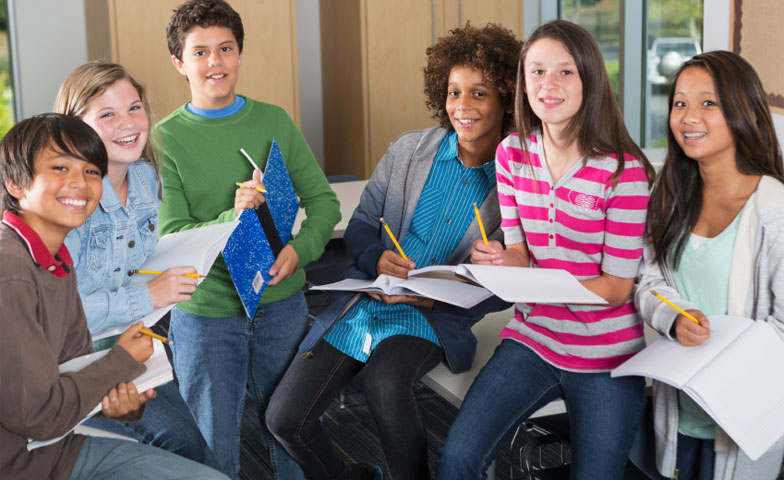The disruptive behavior of some students can be a top concern of middle school teachers, administrators, and parents in many schools. While time is spent considering approaches to decreasing behavioral incidents, important goals also include focusing on increasing attendance and creating a productive learning environment for students. Here are some ideas to consider as you create a school culture that engages all students as positive, productive members of the community.
Building Community in Your School
I think we can all agree that a strong sense of community within a school is important—but how do we go about effectively building community? First, we need to understand that a strong community is created by weaving bonds of understanding and caring among individuals.
The Center for Teen Empowerment has developed an interactive methodology that functions to build deep levels of communication and trust among groups of children, teens, and adults. Any school can incorporate this approach by making the commitment to work skillfully throughout the school year to engage students in activities that help them learn each other’s names, share information about their backgrounds, and talk about their hopes and dreams. The result is a school where students have the context they need to see each other as human beings who deserve respect.
Involving Student Leadership
The best way to achieve this result is to recruit and engage a broad range of students to work as partners with faculty in facilitating these community-building activities. By “a broad range of students,” I mean that the leadership group should include students who are most likely to be involved in negative behaviors as well as students who would more typically be tapped for leadership positions.
Integrating students who are having difficulty with those who are experiencing more success allows those who are doing well to influence those who are not. It also gives the leadership group the credibility needed to positively influence the school culture across the board.
What Might It Look Like?
Picture an assembly with students and teachers speaking about their lives and talking about their hopes for the coming year. Maybe there’s a skit with role reversals—students act as teachers and teachers act as students. Perhaps there is a student speak-out, where audience members are asked to comment.
Then students return to classrooms or break into small groups where they spend a period engaged in interactive exercises that help them learn names, speak in pairs about their lives, brainstorm issues they face, and set goals for the year.
The Payoff
Of course, none of this is easy, but neither is teaching math, science, or English! In fact, teachers go through years of training and spend countless hours of in-school, after-school, and out-of-school time doing everything they can to help students learn. But when it comes to the essential component of building community in the school, though we agree that it’s important, we usually dedicate little or no resources to making it happen.
In our 23 years of experience at the Center for Teen Empowerment, we have repeatedly seen the major payoff for all elements of the school when community-building strategies, propelled by student leadership, are implemented. It’s an investment that is well worth the effort.
Stanley Pollack is the founder and executive director of the Center for Teen Empowerment, which works in Boston and Somerville, MA, and in Rochester, NY, and he is the author of Moving Beyond Icebreakers: An Interactive Approach to Group Facilitation, Learning, and Action.
